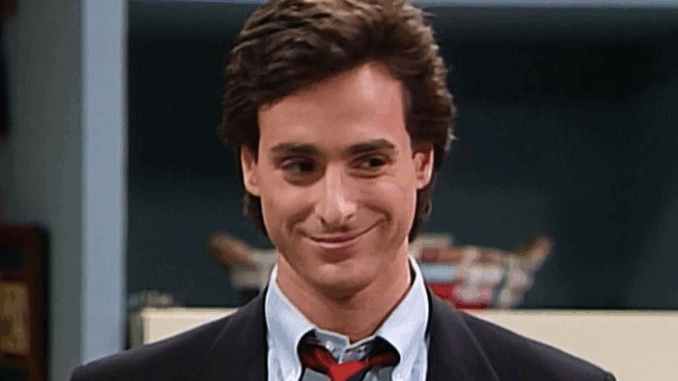
More Than Just a Sequel
Fuller House was more than a nostalgic return—it was a complex production that combined decades-old legacy with modern streaming demands. While viewers enjoyed family-friendly episodes and humor, the production process was filled with surprises, innovative techniques, and challenges that many fans never knew about.
From casting to set design and script rewrites, the making of Fuller House offers a fascinating glimpse into modern sitcom production.
1. Reviving an Iconic Sitcom
-
Netflix wanted to capitalize on Full House nostalgia
-
Cast negotiations took months, as actors had moved on with careers
-
Original tone had to be maintained while updating storylines for modern audiences
2. Balancing Old and New Characters
-
D.J., Stephanie, and Kimmy returned, but new characters were added
-
Writers had to ensure seamless integration without alienating longtime fans
-
This balance influenced episode structure and screen time
3. Recreating the Tanner Home
-
The iconic Tanner house was digitally recreated on set
-
Set designers used original blueprints and photos for accuracy
-
Some walls were removable to allow multiple camera angles
4. Costume and Wardrobe Decisions
-
Original character looks were maintained with slight updates
-
Wardrobe reflected modern fashion while staying true to nostalgia
-
Kimmy’s quirky style and D.J.’s casual look were carefully curated
5. Technical Innovations
-
Netflix required high-definition filming
-
Multi-camera setup for traditional sitcom feel combined with modern cinematography
-
Lighting and camera placement were optimized for both humor and realism
6. Last-Minute Script Rewrites
-
Writers occasionally updated scripts during shooting
-
Some iconic lines were improvised by actors
-
Adjustments maintained humor and connected with both old and new audiences
7. Guest Star Appearances
-
Original cast members like Uncle Jesse and Joey returned for guest spots
-
Coordination of schedules sometimes delayed production
-
Guest appearances were carefully planned to maximize nostalgia impact
8. Live Audience Influence
-
Some scenes were filmed with a small live audience
-
Audience reactions sometimes influenced editing and delivery
-
Maintained energy and comedic timing similar to the original series
9. Child Actors and Training
-
Young cast members were trained for comedic timing
-
Guidance ensured they matched the energy and style of original actors
-
Provided consistency and authenticity across generations
10. Voiceover and Animation Integration
-
Some episodes used animation or voiceover to enhance comedic elements
-
Required careful post-production coordination
-
Added layers of creativity not seen in the original Full House
11. Music and Theme Song Updates
-
“Everywhere You Look” theme updated slightly for streaming
-
Background music emphasized comedic beats and emotional moments
-
Musical cues contributed to continuity with original series
12. Challenges With Streaming Format
-
Binge-release structure required tighter story arcs
-
Episodes were shot and edited for both episodic enjoyment and full-season streaming
-
Maintaining consistent pacing was a new challenge for the team
13. Creative Team Dynamics
-
Writers, directors, and producers had to navigate nostalgia vs. modernization
-
Collaboration was key to balancing old charm with fresh content
-
Some creative disagreements occurred but were resolved professionally
14. Physical Comedy Planning
-
Many comedic moments required props and coordinated stunts
-
Actors rehearsed multiple times to prevent accidents
-
Attention to detail ensured classic physical humor was preserved
15. Technology Behind the Scenes
-
Modern cameras and editing software enhanced production quality
-
Some scenes used digital enhancements to recreate iconic moments
-
Technology allowed for smoother filming and faster post-production
16. Maintaining Nostalgia While Innovating
-
Writers frequently referenced original Full House storylines
-
Nostalgia-driven jokes were balanced with modern topics
-
Ensured long-time fans felt at home while engaging new viewers
17. Fan Reactions Shaping Production
-
Social media engagement sometimes influenced minor creative decisions
-
Cast and crew monitored feedback to maintain authenticity
-
Showrunner decisions often reflected fan sentiment without compromising story
Conclusion
The production of Fuller House combined respect for the original series with modern techniques, creating a unique blend of nostalgia and innovation. Behind-the-scenes stories reveal a highly coordinated process, with careful attention to casting, set design, scripts, and audience expectations. The show’s success demonstrates how a classic series can be revived thoughtfully for a new generation.
FAQs
1. How was the Tanner house recreated?
The set designers used original blueprints, photographs, and removable walls to ensure accuracy and allow multiple camera angles.
2. Were original cast members involved in production decisions?
Yes, actors like Candace Cameron Bure provided input on scripts, wardrobe, and overall tone.
3. Did the show use a live audience?
Some scenes were filmed in front of a small live audience to capture authentic reactions.
4. How did streaming affect production?
Episodes were edited for binge viewing, requiring tighter story arcs and consistent pacing.
5. Were there modern updates to the original theme song?
Yes, the theme song was slightly updated, with musical cues supporting both nostalgia and new content.
